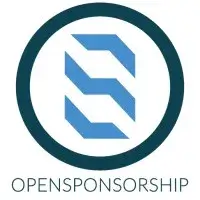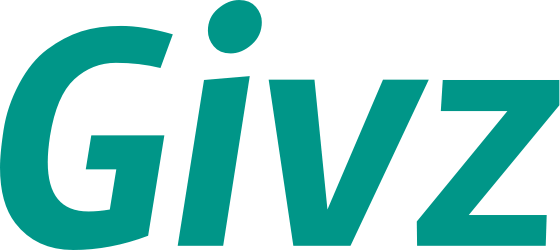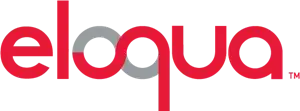Ready to launch your own podcast? Book a strategy call.
Frontlines.io | Where B2B Founders Talk GTM.
Strategic Communications Advisory For Visionary Founders
Conversation
Highlights
From Underdog to Innovation: How Vev’s Founder is Redefining Web Development Workflows
Most startup stories from outside Silicon Valley begin with a disadvantage narrative. But when Tine Karlsen talks about building Vev from Oslo, she frames Norway’s underdog status as a strategic advantage. “We have always thought of ourselves as underdogs… So I feel like coming from Norway, you always have to have that mindset that you’re competing with the big dogs.”
This mindset shaped Vev’s approach to building a web creation platform that bridges the gap between headless CMS systems and traditional website builders. Rather than viewing their distance from tech hubs as a weakness, they used it to identify and solve a problem that Silicon Valley might have missed.
The Evolution of a Problem
The genesis of Vev came from observing an absurd market behavior. “When companies were looking for ways to bring their print publication to Web, that tells me that large companies, they are so stuck with their original workflow that they started doing absurd things like converting PDFs to digital publications when that format is definitely not suitable for the web,” Tine explains.
This observation coincided with two major market trends: the rise of no-code website builders and the emergence of headless CMS solutions. Large companies were caught between these two options – either sacrifice flexibility with no-code builders or maintain developer dependencies with headless CMS. Vev identified this gap and built a solution that would enable teams to “build front end visually.”
Tactical Market Entry
Instead of trying to boil the ocean, Vev chose a precise entry point: the media industry. Their first major client was Shipstead, the largest media house in Northern Europe. The results were dramatic: “They actually reduced the time to market for these types of sites with over 90% from three weeks down to now being 30 minutes.”
This tactical choice proved crucial for two reasons. First, media companies produce custom content at high scale, making them perfect early adopters. Second, their success with Shipstead provided a compelling case study for expansion into other enterprise markets.
The Multi-Stakeholder Challenge
One of Vev’s most interesting tactical decisions was their approach to product development and sales. Rather than building a tool solely for designers or developers, they created a platform that served multiple stakeholders while maintaining clear boundaries.
“We cater to teams, so we have to get through to both the designer, the developer, and other stakeholders on the team. And that makes the task incredibly complex,” Tine shares. Their solution was to make the platform both inclusive and protective: “If a designer sets up something in Vev, for example, a template for a blog post, a marketer can access that template without having the right to change design, but only change content.”
Breaking Through Communication Barriers
Perhaps the most valuable insight from Vev’s journey is their evolution in market communication. After trying various marketing approaches, they discovered that sophisticated buyers responded better to straightforward communication.
“What led me to that aha moment is actually sort of less bullshit and less marketing swagger when it comes to our communication,” Tine explains. “We have tried a lot of nice ways to communicate what Vev does, which ends up as more concepts, more than just saying directly what we do.”
Category Creation vs. Transformation
Rather than attempting to create an entirely new category, Vev is taking a more nuanced approach. “I would say that we are more transforming an existing category… The unique point with Vev is the workflow behind getting to the end result, because the workflow is faster without compromise.”
This strategic choice reflects a sophisticated understanding of market dynamics. Instead of fighting existing mental models, they’re evolving them – making it easier for potential customers to understand and adopt their solution.
For founders building innovative products, Vev’s journey offers valuable insights about market entry, stakeholder management, and the power of clear communication. But perhaps most importantly, it demonstrates how being an underdog can become a strategic advantage when paired with clear vision and precise execution.
Actionable
Takeaways
Identify and Address Workflow Inefficiencies:
Tine’s journey with Vev underscores the importance of looking for inefficiencies in existing workflows and designing solutions that simplify and accelerate these processes. For B2B founders, this means actively seeking out areas within your industry where current solutions fall short, especially in terms of productivity and ease of use, and developing your product to directly address these gaps.
Focus on User-Centric Design and Flexibility:
Vev's success in significantly reducing the time to produce digital content highlights the value of creating tools that are not only powerful but also accessible to a broad range of users. Founders should prioritize building platforms that cater to professional needs while remaining user-friendly, ensuring that they do not require specialized knowledge to leverage fully.
Strategic Positioning is Key to Market Understanding:
Overcoming the challenge of positioning Vev in a crowded market taught Tine the importance of clear and direct communication about what the product does and its unique value proposition. Tech founders should ensure their product's positioning is straightforward, making it easy for potential users to understand how it fits into their existing ecosystems and solves a specific problem.
Utilize the Strengths of Your Ecosystem for Innovation:
Drawing from the Norwegian tech ecosystem's readiness to adopt new technologies, Tine leveraged this characteristic to test and grow Vev. Founders should consider how their own ecosystems' unique traits can provide a competitive advantage, whether it's early adoption, a specific talent pool, or industry expertise.
Adapt to Fill the Gaps Left by Existing Solutions:
Vev was designed to complement traditional CMS platforms by providing a more efficient way to handle front-end design. This approach of not just creating another tool but offering something that works within the established infrastructure can be a powerful strategy for B2B tech founders. Look for opportunities where your solution can fill a gap rather than replace existing systems, facilitating smoother integration and quicker adoption.



































































































